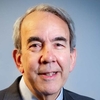Welcome! Save 30% on all CLE, CPE, and Professional Skills webinars, plus 15% off any annual pass with code HOLIDAY25
About the Course
Introduction
This CLE course will review the continued efforts by the ABA and many state bars to regulate against "harassment" and "discrimination" in an attorney's speech or conduct, the debate over ABA Model Rule of Professional Responsibility 8.4(g), and when a state can legitimately regulate an attorney's speech related to the practice of law.
Description
In 2016, the ABA proposed Model Rule 8.4(g), which makes it professional misconduct to "engage in conduct that the lawyer knows or reasonably should know is harassment or discrimination based on race, sex, religion, national origin, ethnicity, disability, age, sexual orientation, gender identity, marital status or socioeconomic status in conduct related to the practice of law." ABA Model Rule 8.4(g).
The rule utilizes a broad definition of "conduct related to the practice of law," which includes not only "representing clients; interacting with witnesses" and other in court activities, but also "participating in bar association, business, or social activities in connection with the practice of law." Id. Comment 4.
The ABA ethics committee issued an opinion in 2020 narrowly interpreting Rule 8.4(g) to exclude comments on "issues of public concern" and suggesting that the rule applies only where comments are directed at specific persons.
Only Vermont adopted Rule 8.4(g) wholesale. Pennsylvania and Connecticut have adopted versions of the rule, and pre-enforcement challenger to the Pennsylvania rule was found to lack standing by the Third Circuit. A petition for writ of certiorari has been filed in that case. There is currently pending a challenge to Connecticut's rule before the Second Circuit that was argued last fall.
There is a proposal pending in the Illinois Supreme Court Rules Committee to adopt a version of the rule.
In the meantime, other states, like Hawai'i have adopted rules that do not resemble Rule 8.4(g) other than to specifically target sexual harassment in the practice of law. Still other states like New York have adopted more narrow rules with specific protections for Constitutionally protected speech.
Listen as this panel of First Amendment experts discusses the regulation of attorney speech, the legality of Model Rule 8.4(g), and what Greenberg v. Haggerty teaches going forward.
Presented By

Mr. Eckler’s practice has evolved from primarily representing insurers in coverage disputes to managing complex litigation in which he represents a wide range of professionals, businesses and tort defendants. His record of success includes numerous summary judgments, several successful trial results and multiple favorable appellate results. His coverage practice for insurers and the insured involves CGL and personal lines policies, issues involving the duties to defend and indemnify, bad faith and the application of exclusions.

Mr. Samp has specialized in appellate litigation with a focus on constitutional law. He served as Chief Counsel of the Washington Legal Foundation for more than 30 years and recently retired after serving four years as Senior Litigation Counsel at the New Civil Liberties Alliance. Mr. Samp has participated directly in more than 200 cases before the U.S. Supreme Court, including as counsel of record in Garland v. Cargill, a case being heard by the Court this term. Mr. Samp is a graduate of Harvard College and the University of Michigan Law School and clerked for a federal judge in Detroit.

Ms. Wagenmaker provides legal counsel in corporate, tax, employment, and real estate matters for nonprofits operating on local, national, and international levels. Her clients include churches and other religious organizations, social service providers, and schools. Her corporate and tax work includes development of new tax-exempt entities, providing guidance for effective nonprofit governance and other operational legal issues. In addition, she represents clients in property tax exemption matters for charitable, religious, and educational purposes, shared occupancy arrangements, and property transfers.
-
This 90-minute webinar is eligible in most states for 1.5 CLE credits.
-
An excellent opportunity to earn Ethics CLE credits. Note: BARBRI cannot guarantee that this course will be approved for ethics credits in all states. To confirm, please contact our CLE department at pdservice@barbri.com.
-
Live Online
On Demand
Date + Time
- event
Thursday, April 18, 2024
- schedule
1:00 p.m. ET./10:00 a.m. PT
- Regulation of lawyer speech
- History of Rule 8.4(g)
- Constitutional concerns under Rule 8.4(g)
- Due process
- First Amendment free expression
- Freedom of association and religion
- Vagueness
- Understanding when speech or conduct is or is not "related to the practice of law"
- NIFLA and the regulation of occupational speech
- Commercial issues
- Political speech
- Comparison between use of Rule 8.4(d) and Rule 8.4(g)
- Greenberg v. Lehocky – 3rd Circuit decision and petition for writ of certiorari
- Cerame v. Bowler – 2nd Circuit oral argument
- Proposal to the Illinois Supreme Court Rules Committee to amend Illinois Rule of Professional Conduct Rule 8.4(j)
The panel will review these and other key issues:
- What is the difference between regulating conduct and speech in light of the Supreme Court's decision in NIFLA v. Becerra, 138 S. Ct. 2361 (2018) and other Supreme Court precedent?
- What do critical terms in Model Rule 8.4(g) mean?
- Did the ABA 2020 Ethics Committee comments make any difference in the scope or constitutionality of the model rule?
- What are the First Amendment concerns that Model Rule 8.4(g) raises?
- How the rule might be revised to obtain its goals
Unlimited access to premium CLE courses:
- Annual access
- Available live and on-demand
- Best for attorneys and legal professionals
Unlimited access to premium CPE courses.:
- Annual access
- Available live and on-demand
- Best for CPAs and tax professionals
Unlimited access to premium CLE, CPE, Professional Skills and Practice-Ready courses.:
- Annual access
- Available live and on-demand
- Best for legal, accounting, and tax professionals
Unlimited access to Professional Skills and Practice-Ready courses:
- Annual access
- Available on-demand
- Best for new attorneys
Related Courses

Lawyer Like an Athlete: How to Up Your Game at Work and in Life
Tuesday, January 27, 2026
1:00 PM E.T.

Ethical Issues in Cryptocurrency Transactions: Model Rules, Guidance, and Challenges for Counsel
Wednesday, February 4, 2026
1:00 p.m. ET./10:00 a.m. PT

Competence and Well-Being: Addressing Substance Abuse in Legal Practice
Available On-Demand
Recommended Resources

Navigating Modern Legal Challenges: A Comprehensive Guide
- Business & Professional Skills
- Career Advancement

Beyond Law School: Tackling the Realities of Modern Legal Practice
- Learning & Development
- Business & Professional Skills
- Career Advancement

